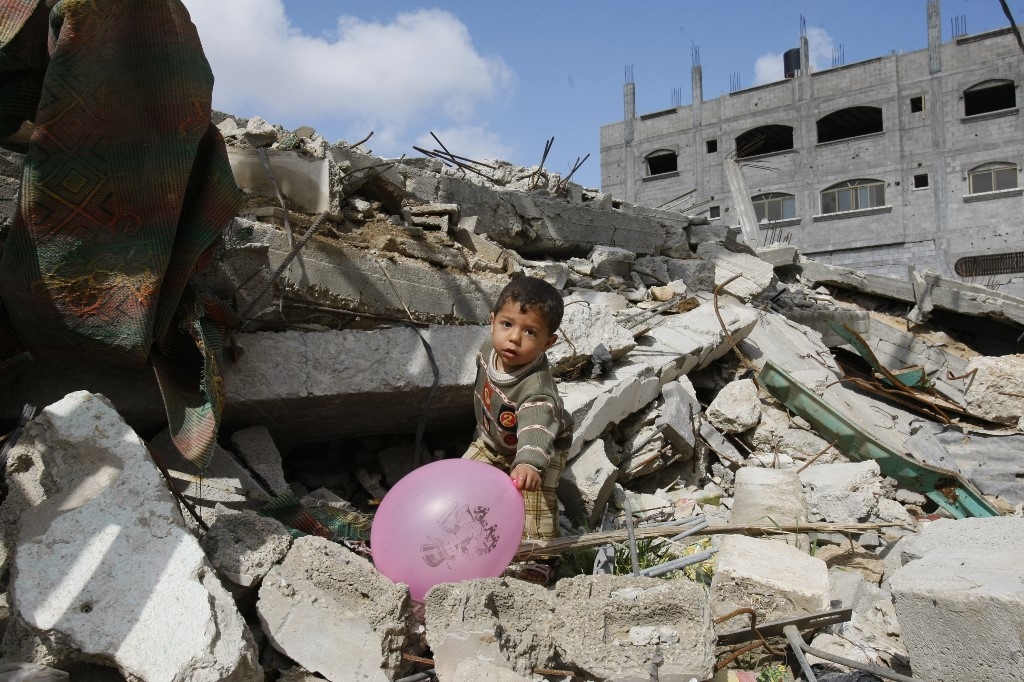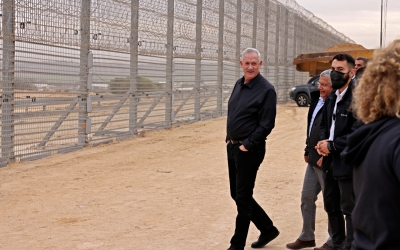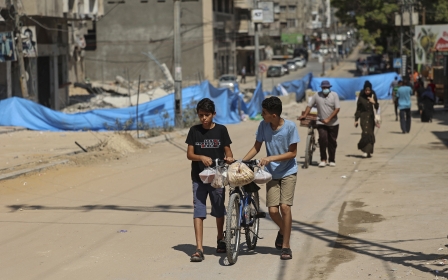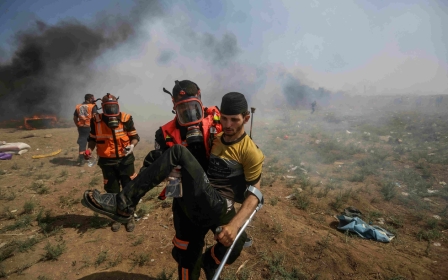Gaza: Report reveals civilian cost of Israeli bombing in heavily populated areas

New research on Israel's bombardment of the Gaza Strip in May 2021 has revealed the cost of using highly explosive weapons on heavily populated areas, with UK-based monitor Airwars showing exactly where and how almost 200 Palestinian civilians were killed.
The report said between 151 and 192 civilians were killed across the besieged territory by the Israeli army during its assault earlier this year.
They added that between 15 and 20 civilian deaths in Gaza were also likely to have been caused by Palestinian misfires.
According to the latest official information from Palestinian and Israeli sources, around 300 people were killed as a result of the conflict.
The vast majority died in Gaza, with the enclave's health ministry reporting 259 dead, including 66 children and 41 women, along with 2,211 injured.
New MEE newsletter: Jerusalem Dispatch
Sign up to get the latest insights and analysis on Israel-Palestine, alongside Turkey Unpacked and other MEE newsletters
Thirteen people were reported killed in Israel by rockets launched from Gaza, among them two children.
Overwhelmingly, Israel bombed targets in densely populated areas, with the report warning that striking military targets in non-military environments had "devastating impacts" on the civilian populace.
Airwars produced an interactive map laying out the locations and extent of the civilian death toll:
A crippling blockade of the Gaza Strip, one of the most closely populated areas on the planet, has been maintained by Israel since 2007, something that rights groups say amounts to collective punishment of the enclave's two million residents.
"We are confident [the report] will add to a growing body of research showing that when you carry out attacks with explosive weapons in heavily populated areas the overwhelming majority of those killed are civilians," Chris Woods, director of Airwars, told Middle East Eye.
"This has been documented time and again - it is almost one of the laws of modern warfare."
Contrasting casualties
More than a dozen hospitals and clinics were destroyed during the 11-day bombing campaign which destroyed more than 1,000 residential units.
Roughly 97 percent of Gaza's drinking water is contaminated, and residents are forced to live with constant power outages due to a heavily damaged power grid.
Israel prevents the importing of materials and equipment into Gaza and has imposed tight restrictions on exports, leading to a state of "paralysis" in several sectors of Gaza's economy.
The siege is also upheld by Egypt, which restricts movement in and out of Gaza on its border.
Airwars tracks and archives international air attacks undertaken in several countries in the Middle East.
The Airwars report contrasted the Gaza bombings with the ongoing air strikes launched by Israel against pro-Iran targets in Syria since 2013.
The report said Israel had likely killed at least 14 and as many as 40 Syrian civilians since then, with most of the attacks focusing on military targets, such as the Lebanese Hezbollah movement.
"We hope to highlight that civilian harm varies not just from military to military, but even within the same organisation," said Woods.
"Militaries that in one context are good at protecting civilians can in another cause devastating civilian impacts."
Middle East Eye delivers independent and unrivalled coverage and analysis of the Middle East, North Africa and beyond. To learn more about republishing this content and the associated fees, please fill out this form. More about MEE can be found here.





